As humans, we’re terribly suited for life underwater. Without any ability to take oxygen from the seawater, we’d suffocate in minutes. We’d succumb to hypothermia even in the most tropical seas, and if by some miracle we were still alive after a few days, our inability to take food or fresh water would surely finish us off within a week. These are similar to the problems we’d face if we tried to live on Mars or the Moon, so our interest in life below the surface is understandably limited.
But that is a huge shame, and this is something that’s just now beginning to dawn on us as we start to experiment deeper underwater here in the Tuamotus archipelago. These volcanic reefed islands (“atolls”), each forming a ring with a giant lagoon in its center, are teaming with a huge variety of fish, rays, sharks, and coral formations, almost all of which can be explored within 20 meters (60 feet) of the surface. It’s difficult to imagine how one could design a better place for this type of underwater exploration, and that explains the reputation this place has as one of the best, albeit most difficult to access, diving locations in the world.
On Tamarisk we have no diving equipment other than flippers, masks, and snorkels, which does limit our experimentation slightly. But more than offsetting this (by orders of magnitude) is that we have Javi (aka “Tarzan”) aboard with us, who just happens to be a free diving instructor and, after years of training and diving since he was a kid, now seems almost more comfortable below the surface than he does on land. For those not familiar, free diving is the complex discipline (one part sport, one part art, one part yoga) of holding your breath and diving deep beneath the surface without the help of normal diving equipment. With nothing but flippers. a mask, and a kilogram of lead weight, Tarzan can go to depths of 50 meters (150 feet), which is about twice as deep as most recreational SCUBA divers normally go out here. Even beginners like Piers and I can already reach 10 meters, and can reasonably expect to reach 15-20 meters after just a couple of weeks of practice under Tarzan’s guidance.
But our ambition with free diving is not to achieve world record depths (which, by the way, is an absurd 100+ meters). Our goal, like most free divers, is to experience a new level of comfort below the surface so we can explore the reefs and come a bit closer to the incredible sea life that fills these places and experience for ourselves, even for just a minute or two at a time, what an underwater life is all about. If you’d like a small but inspirational peek at what’s possible with free diving, check out Tarzan’s experience in the Bahamas last year in this video clip.
It’s time for us to pull the anchor now and continue our march west through the Tuamotu atolls. The trick here is to get through the narrow passes in the reef into the protected lagoon (most atolls have at least one or two safe passes), and anchor as near to the pass as possible. The passes are generally deep and safe for us to enter either at low or high tide when the tidal currents are minimal (currents can reach 8-9 knots in the passes and create huge standing waves and washing machine sea conditions at other times) Once we’re anchored safely, we take the dinghy back out through the pass because this is where the impressive sea life is to be found. Once outside, we jump in the water and drift back through the pass with the tidal current into the lagoon, free diving the entire way through. We’ve explored the pass at the Makemo atoll and the South Pass of Fakarava this way, and we’re about to sail 30 miles north inside the Fakarava lagoon and do the same thing at this atoll’s North Pass. The whole thing is a bit addictive, so we need to be careful not to get delayed in the Tuamotus too much…. the Society Islands are next on the list and we’re being careful to preserve each precious day we have planned there.
Tarzan free diving in Fakarava:
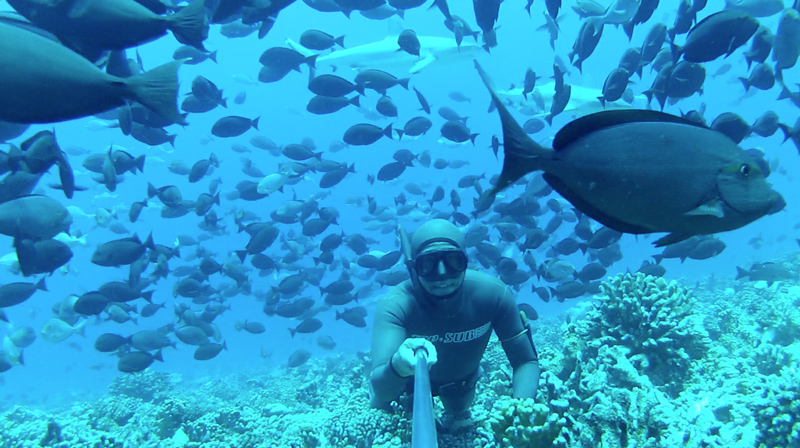
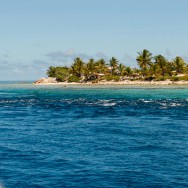
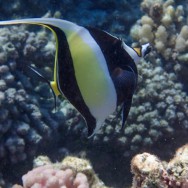
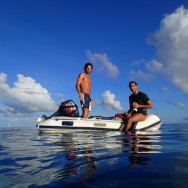
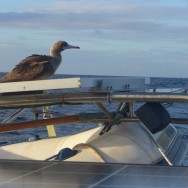
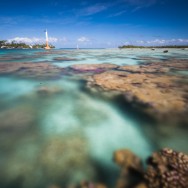
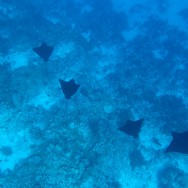
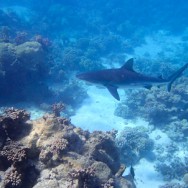
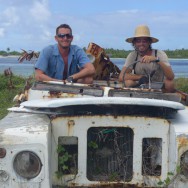
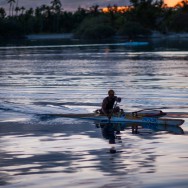
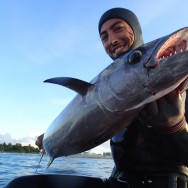
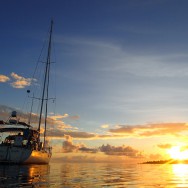
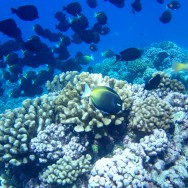
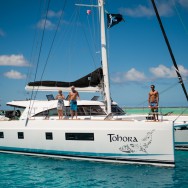
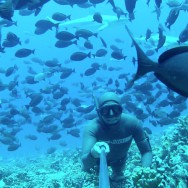
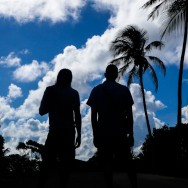
Wowee … pix are fantasmagorical! Fabulous capture of underwater life.. and the rental car is a classic! It looked like you were anchored inside the enclosed lagoon yesterday, so wondering how navigating through the narrow passage went.
Javi’s dolphin video pulled at the heart strings with its beauty and emotion, especially the ‘dance’ with the red scarf… truly unforgettable.
all this is amazing
thank you for your so deep, thoughtful, beautiful descriptions
I am really enjoying your thoughts and beautiful photos of the islands. I lived in the Marshall Islands for 2 years, many years ago, and enjoyed all the things you speak of. Keep in mind one thing when drifting through the passes. These are the favorite hangouts of many types of sharks when the tide is moving.
What kind of camera are you using? Great post!